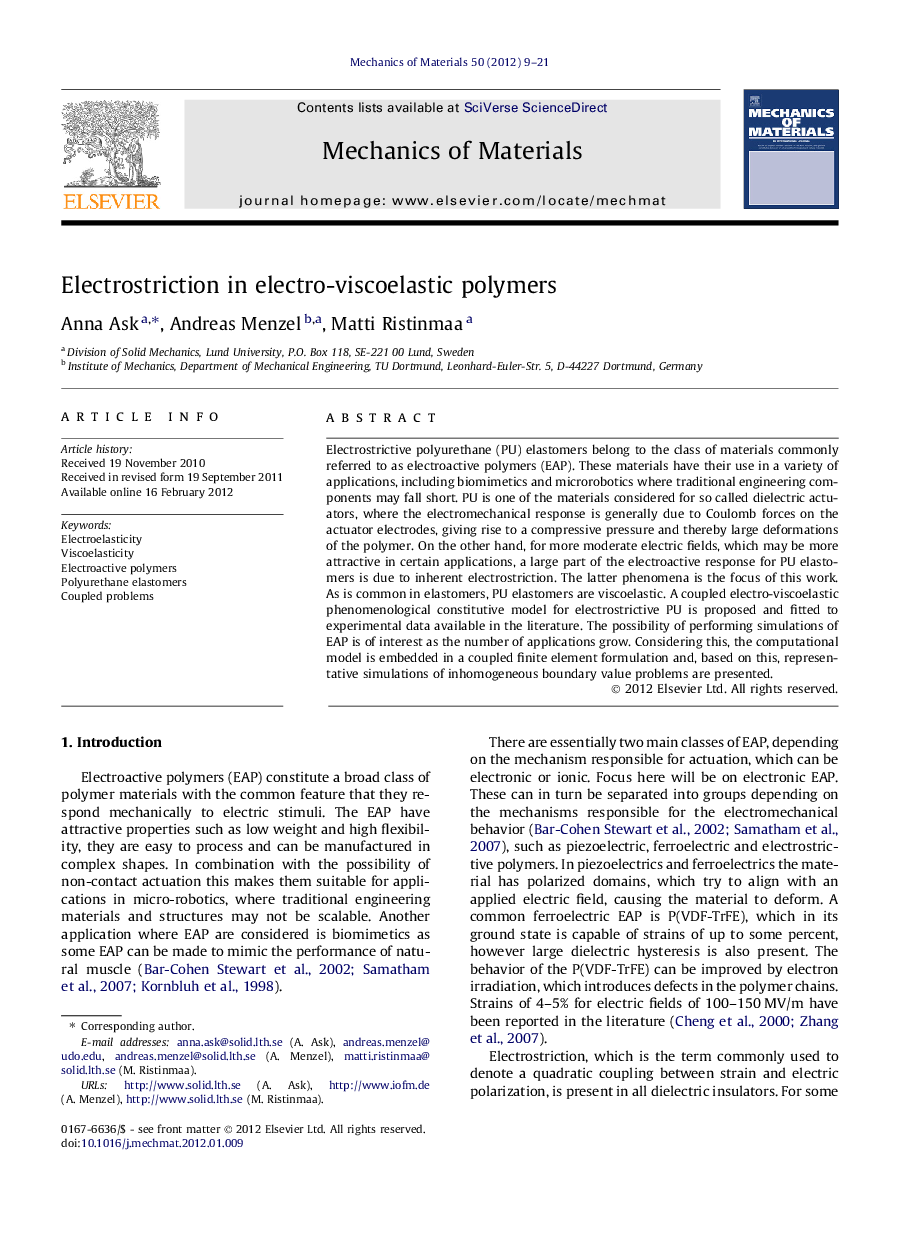| Article ID | Journal | Published Year | Pages | File Type |
|---|---|---|---|---|
| 802894 | Mechanics of Materials | 2012 | 13 Pages |
Electrostrictive polyurethane (PU) elastomers belong to the class of materials commonly referred to as electroactive polymers (EAP). These materials have their use in a variety of applications, including biomimetics and microrobotics where traditional engineering components may fall short. PU is one of the materials considered for so called dielectric actuators, where the electromechanical response is generally due to Coulomb forces on the actuator electrodes, giving rise to a compressive pressure and thereby large deformations of the polymer. On the other hand, for more moderate electric fields, which may be more attractive in certain applications, a large part of the electroactive response for PU elastomers is due to inherent electrostriction. The latter phenomena is the focus of this work. As is common in elastomers, PU elastomers are viscoelastic. A coupled electro-viscoelastic phenomenological constitutive model for electrostrictive PU is proposed and fitted to experimental data available in the literature. The possibility of performing simulations of EAP is of interest as the number of applications grow. Considering this, the computational model is embedded in a coupled finite element formulation and, based on this, representative simulations of inhomogeneous boundary value problems are presented.
► Electro-viscoelastic model for polyurethane elastomers. ► Material parameters identified through calibration process. ► Numerical examples solved by means of finite element method.
